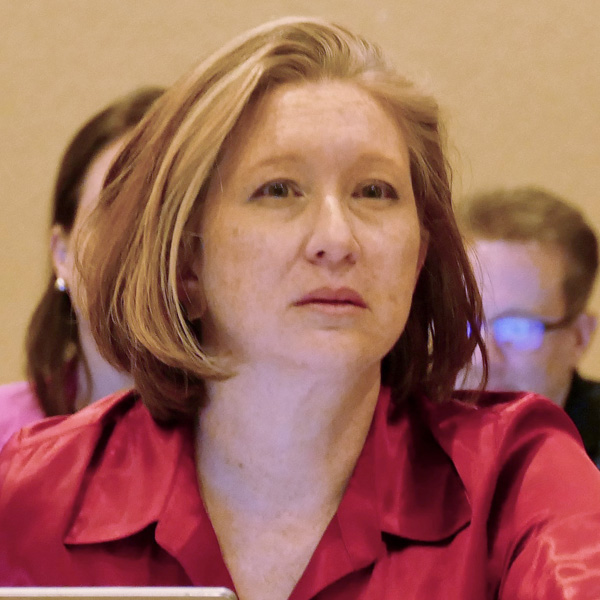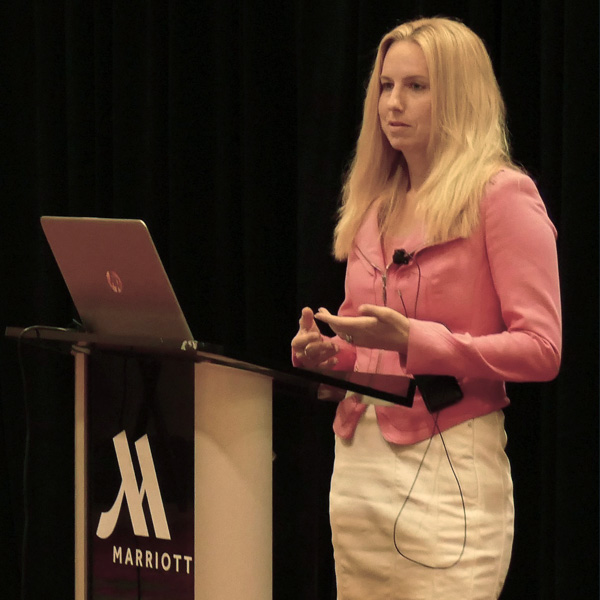SAN DIEGO — Officials in Western states looking to join an RTO should know a key thing about organized markets, according to those familiar with them: They will require a lot of time and resources from your regulators and consumer advocates.
“There are times when I think I’m a little bitty cog in a big RTO world, and that the RTO is my full-time job and the other state regulatory stuff is what I end up with when I’m not busy with RTO stuff,” Arkansas Public Service Commission Chair Ted Thomas said Tuesday at the National Association of Regulatory Utility Commissioners (NARUC) Summer Policy Summit.
Thomas was speaking on a panel to provide Western regulators and advocates with insights on how to position themselves to participate in any organized electricity markets that take root in the region.
As a regulator experienced with both SPP and MISO, Thomas said he’s confident in his agency’s ability to help shape market policy.
“What I worry about is someone who’s newer, that doesn’t have the background, and then they show up and they can get [run] over by a big snowball — not even realizing what hit them, and there’s nobody there to help them help themselves,” he said.
Greg Poulos, executive director of the Consumer Advocates of the PJM States, advised Westerners of the benefits of state consumer advocates and utility commissions being aligned on their positions on RTO affairs.
“For me that’s very helpful because I do talk to state commissions, their advisers or staff a lot, and it’s a great working relationship. I’m able to provide some of their opinions in the stakeholder process along with ours, and they have a lot more influence than we do,” Poulos said.
Poulos said RTO/ISO market monitors can be a valuable source of information because electricity customers and their advocates usually have less information than other stakeholders because they don’t directly participate in or regulate the markets.
Although PJM’s territory includes 65 million residential customers, those ratepayers represent just 1.4% of the votes “at the lower levels” of the RTO’s consensus-based stakeholder process, and have little visibility into the transmission planning process, Poulos said.
“There’s public power, there’s industrial customers, but for us as customers — those who pay the bills — we have very little influence,” he said.
Amanda Bradshaw, energy markets adviser with FERC’s Office of Public Participation (OPP), said there are many groups “that are recognizing that RTOs have an increasing impact on everyday people [and] on broader energy policy questions that people care about.
“But they might not necessarily understand or have full information about FERC processes, or about the market underpinnings of those policy goals that they care about,” she said.
Established in 2021, the OPP “is trying to understand how we can reach out to the public and bridge a lot of information gaps,” Bradshaw said. The office also seeks to increase understanding of RTO processes and help public interest groups figure out how get involved in those processes from the beginning.
“How do you actually participate in those processes if you don’t understand how those things work? How do you allocate staff resources to attend those meetings, especially when it’s necessary sometimes to attend in person?” she asked.
“Typical citizens don’t have expertise; they have passion,” Thomas said. “They might have environmental passion. … They might just want the lights to come on [and say], ‘Leave me alone.’ But for that person to have input … you need expertise. But having expertise doesn’t do any good if you don’t have access to the information, and to me, that’s a big part of that problem.”
‘Complex Subject Matter
Panel moderator Kent Chandler, chair of the Kentucky Public Service Commission, asked panelists whether they have enough resources to have a “meaningful impact” on RTO processes. Each answered with a resounding “no.” He followed up with a question about what barriers must be removed to encourage participation by those outside the industry.
“I think you start with inclusiveness: barriers to entry around cost, membership fees, differing eligibility requirements for membership in the RTOs,” said John Moore, director of the Natural Resources Defense Council’s Sustainable FERC Project.
Moore said his organization recently joined SPP for the $6,000 membership fee after FERC eliminated the RTO’s $50,000 deposit fee and $100,000 exit fee for all members. In PJM, he noted, the Sustainable FERC Project cannot become a full member and — along with the states — is barred from attending Liaison Committee meetings with the Board of Managers. Moore also pointed to the restrictions the press faces in covering NEPOOL, something that “FERC said is okay, more or less.” NEPOOL meetings are closed to the public; although RTO Insider’s ISO-NE correspondent attends meetings as an end-use customer, NEPOOL rules bar quoting from members’ discussions. (See FERC Rejects RTO Insider Bid to Open NEPOOL.)
“Another set of huge issues is around data access and overall understandability of the issues,” he said. “There’s a lot of chicken-and-egg issues going on here. The reason a lot of non-traditional groups and entities don’t show up at the RTOs is that it’s just very complex subject matter.”
Moore said working groups at WECC and other organizations in the West make the region’s electricity data more accessible. “My experience has been lots of times — and somebody in the West can correct me — it’s actually easier to get a lot of the data we need to input in our models than it’s been in the East; and a lot of different standards are applied in different RTOs.”
FERC’s Bradshaw said groups lacking expertise in energy regulation tell the OPP, “‘We’re just having a really difficult time crafting these proceedings that we need to be involved in, and that would be relevant to us,’” Bradshaw said. “I think it’s even difficult when you do have those resources, when you’re able to hire an attorney or contract a law firm to track those things for you.”
“The real resource issue for the states is state staff and state time.” Thomas said.
Balancing Act
Thomas believes the U.S. grid has become more robust since the catastrophic blackout that brought down the Northeast grid in 2003, in part because of new investments and the “balance” that comes with having states certify utility transmission plans after being included in the negotiation process.
“I think one of the most important things that comes out of this is that balance — the balance of states and your roles as commissioners and your ability to maintain that balance,” Poulos said.
But Poulos sees a lack of balance in PJM’s current transmission process. While he lauded the RTO for fostering wholesale competition in power generation, he criticized it for a corresponding lack of competition and transparency in transmission planning.
“We don’t really know what PJM’s role as a planner is in a lot of cases because since 2012, or [FERC] Order 1000, there’s been a lot of push towards competition, but what happened is a transmission owners said we’re gonna push everything away from those types of projects,” he said.
As a result, Poulos said, the majority of the RTO’s transmission projects are “supplemental” ones that waive competition.
Poulos thinks there’s an open question about the roles of PJM, the transmission owners and the states in the “vast majority” of the RTO’s transmission planning.
“One of the deepest frustrations we have is that lack of ability to be involved in that process,” he said.
Moore said there’s now an “implicit connection” between transmission planning and resource adequacy.
“And I think this is something that states and FERC are grappling with, obviously through the [transmission Notice of Proposed Rulemaking] and through the dialogue that has happened with FERC and the state commissions, and the increasing realization with our transforming grid mix that there are going to be more out-of-state resources that have to be relied on to help meet reliability and state resource adequacy needs,” Moore said. (See States Back Interregional Transfer Requirement.)
Poulos wrapped up his comments by advising Western state officials on what they should consider as they contemplate joining an RTO.
“I would say the one thing is, if anything goes wrong in the system in your state, as a commissioner you are the ones who are going to be accountable, so you need to have that ability to have a say in what goes on,” he said.
State officials also need to immediately establish transparency in the RTO and guarantee their representation, preferably with a reserved seat on the board of directors, he said.
Moore said states need to ensure that RTOs make efforts to include different groups in their processes.
“And even if they’re not full-time stakeholders, these groups and communities need to understand what the RTO is doing is actually affecting them, so they can in some way start to influence that process. So don’t forget about equity in this process,” he said.

